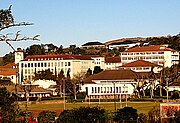
Sir Joseph Banks, 1st Baronet, was an English naturalist, botanist, and patron of the natural sciences.

Sir William Jackson Hooker was an English botanist and botanical illustrator, who became the first director of Kew when in 1841 it was recommended to be placed under state ownership as a botanic garden. At Kew he founded the Herbarium and enlarged the gardens and arboretum. The standard author abbreviation Hook. is used to indicate this person as the author when citing a botanical name.

Kirstenbosch is an important botanical garden nestled at the eastern foot of Table Mountain in Cape Town. The garden is one of 10 National Botanical Gardens covering five of South Africa's six different biomes and administered by the South African National Biodiversity Institute (SANBI). Prior to 1 September 2004, the institute was known as the National Botanical Institute.
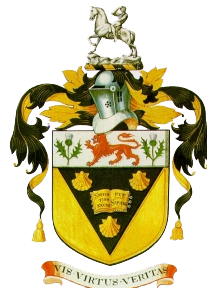
Rhodes University is a public research university located in Makhanda (Grahamstown) in the Eastern Cape Province of South Africa. It is one of four universities in the province. Established in 1904, Rhodes University is the province's oldest university, and it is the sixth oldest South African university in continuous operation, being preceded by the University of the Free State (1904), University of Witwatersrand (1896), University of South Africa (1873) as the University of the Cape of Good Hope, Stellenbosch University (1866) and the University of Cape Town (1829). Rhodes was founded in 1904 as Rhodes University College, named after Cecil Rhodes, through a grant from the Rhodes Trust. It became a constituent college of the University of South Africa in 1918 before becoming an independent university in 1951.

William Guybon Atherstone (1814–1898) was a medical practitioner, naturalist and geologist, one of the pioneers of South African geology and a member of the Cape Parliament.

Albany, South Africa was a district in the Eastern Cape, South Africa. Grahamstown was traditionally the administrative capital, cultural centre and largest town of the Albany district.
His Majesty's Botanist is a member of the Royal household in Scotland.

Makhanda, also known as Grahamstown, is a town of about 140,000 people in the Eastern Cape province of South Africa. It is situated about 110 kilometres (70 mi) northeast of Gqeberha and 130 kilometres (80 mi) southwest of East London. It is the largest town in the Makana Local Municipality, and the seat of the municipal council. It also hosts Rhodes University, the Eastern Cape Division of the High Court, the South African Library for the Blind (SALB), a diocese of the Anglican Church of Southern Africa, and 6 South African Infantry Battalion. Furthermore, located approximately 3 km south-east of the town lies the world renowned Waterloo Farm, the only estuarine fossil site in the world from 360 million years ago with exceptional soft-tissue preservation.

George is the second largest city in the Western Cape province of South Africa. The city is a popular holiday and conference centre, as well as the administrative and commercial hub and the seat of the Garden Route District Municipality. It is named after the British Monarch George III.

The 1820 Settlers were several groups of British colonists from England, Ireland, Scotland, and Wales, settled by the government of the United Kingdom and the Cape Colony authorities in the Eastern Cape of South Africa in 1820.
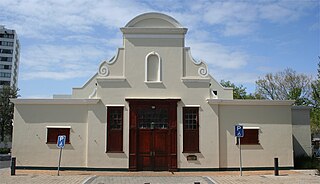
The Southern Suburbs are a group of Anglophone suburbs in Cape Town, Western Cape, South Africa. This group includes, among others, Observatory, Mowbray, Pinelands, Rosebank, Rondebosch, Rondebosch East, Newlands, Claremont, Lansdowne, Kenilworth, Bishopscourt, Constantia, Wynberg, Ottery, Plumstead, Diep River, Bergvliet and Tokai. The area is also commonly referred to as the Cape Peninsula, often including the towns further South such as Fish Hoek.

The 1820 Settlers National Monument, which honours the contribution to South African society made by the British 1820 Settlers, overlooks Makhanda in the Eastern Cape. It commemorates the Anglo-Africans, as well as the English language, as much as the settlers themselves. The building was designed by John Sturrock, Sturrock was inspired by the work of Louis Kahn.
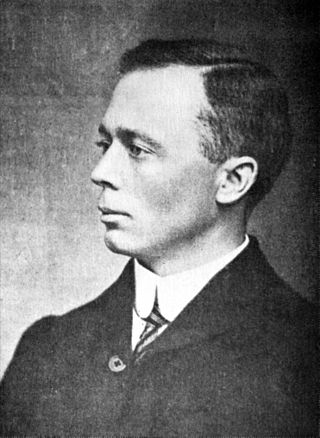
Henry Harold Welch Pearson was a British-born South African botanist, chiefly remembered for founding Kirstenbosch National Botanical Garden in 1913.
Hospital Bend is a major freeway junction, located to the east of the central business district of Cape Town, South Africa. It is the junction between the N2 national route and the M3 metropolitan expressway. Its unusual design led to notoriety as a traffic bottleneck and a frequent accident location; between March 2008 and early 2010 it underwent major roadworks to address these issues. It takes its name from it curving around the grounds of Groote Schuur Hospital.
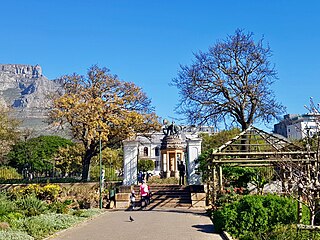
The Company's Garden is the oldest garden in South Africa, a park and heritage site located in central Cape Town. The garden was originally created in the 1650s by the region's first European settlers and provided fertile ground to grow fresh produce to replenish ships rounding the Cape. It is watered from the Molteno Dam, which uses water from the springs on the lower slopes of Table Mountain.

Sir George Edward Cory, was an English-born South African chemist and historian, best known for his six-volume publication "The Rise of South Africa".

The North-West University Botanical Garden on the Potchefstroom Campus of the North-West University (NWU) is the only botanical garden in the North West Province of South Africa. The Garden spans just under three hectares and is open to the public.

The Cecil John Rhodes Statue is a monument erected at Company's Garden in Cape Town. The statue was erected in 1908. It features a full body replica of Cecil Rhodes wearing a three-piece suit, standing with his left hand raised and pointing north. It has been compared to the Jan van Riebeeck statue, which faces south and asserts a different sense of occupation. Despite its size, the present location of the monument in the Company's Garden makes it less significant in comparison to that of Jan Smuts at Adderley Street, Cape Town, a location that had been considered for the placement of the Rhodes statue.
Jacob Glen Cuyler was an American of Dutch origin who was an important character in the settlement of the British 1820 Settlers to the Eastern Cape, South Africa.
Ivan Mitford-Barberton (1896–1976) was a South African sculptor, writer and authority on heraldry.

















